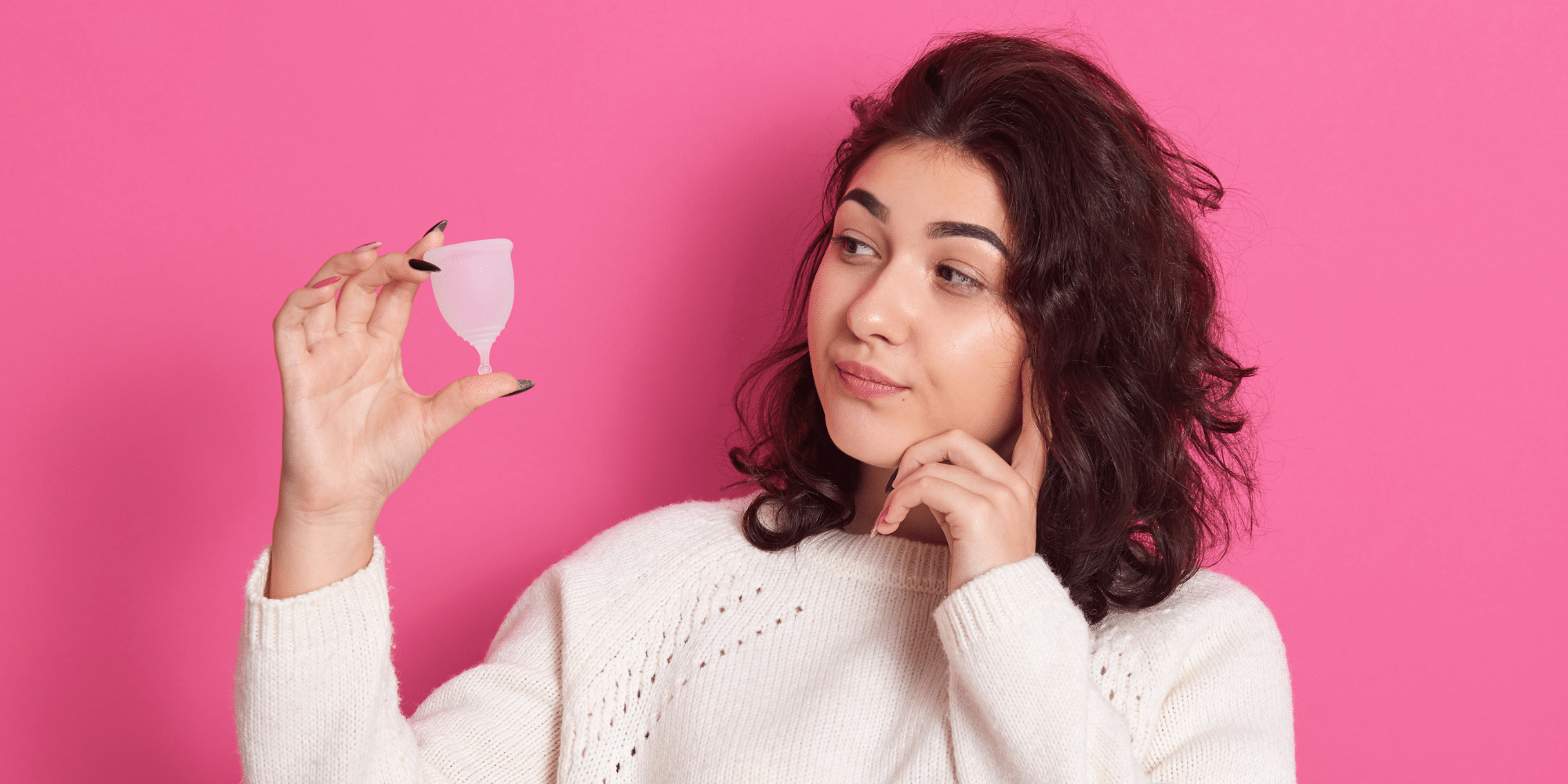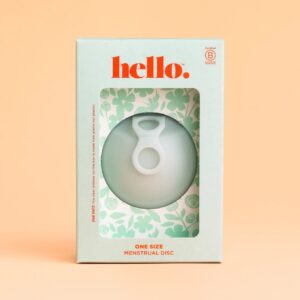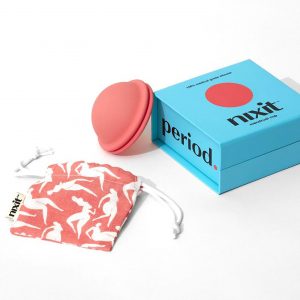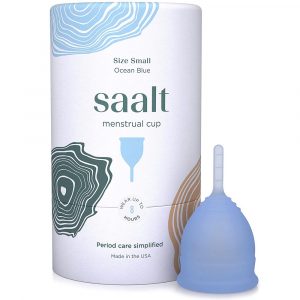10 Tips for Menstrual Cup Leaking to Prevent Accidents
This article is for anyone constantly wondering: “why is my menstrual cup leaking?!”

Menstrual cup leaks are more common than you might think, especially when using a cup for the first time instead of a tampon or pad. However, a menstrual cup of the right size and shape that’s been inserted correctly should have no leakage at all. Here are some tips to follow if your menstrual cup is leaking during your cycle.
How to stop your menstrual cup leaking
Although all menstrual cups are designed to form a perfect, spill-free seal, you may need to learn a few tricks to prevent leakage. Here’s a list of 10 prevention tips for beginners or experienced period cup users.
1. Choose the correct menstrual cup size
Women often experience menstrual cup leaking due to purchasing a small, incorrectly sized cup. If you are over 30 years old or have had children, most brands will recommend a larger cup. As we age, strong pelvic floor muscles tend to weaken, meaning we need a wider cup to create a proper seal. Most women of any age or stage in life can get away with using a larger size cup, however, not many women over 30 can use a smaller cup.
2. Ensure the cup has fully opened and formed a seal
To make sure your cup has fully opened and formed a seal around the wall of the vaginal canal, grasp the base and twist it around as far as you can in a 360-degree circle. In addition, you can do a few squats or move your hips in a circular motion (sort of like spinning a hula hoop). Once you have tried one of these techniques, run your finger around the base of the cup to ensure it has fully opened and is not scrunched /collapsed in any spots. It can also be helpful to give the stem of the cup a gentle downwards tug once it has opened to form a tight seal.
3. Keep the cup dry
Use a piece of toilet paper to dry the rim of the cup on the inside and outside. Inserting a dry cup can help achieve a better seal, thus reducing the chance of leaks.
4. Insert the cup with your foot resting on the toilet
Sometimes, you’ll need to adjust the positioning of your body when inserting the menstrual cup to create a proper seal and prevent leaks. You can achieve this by standing in front of the toilet and resting your foot on the seat. This position makes it easier to insert the cup and get used to the process.
5. Insert the cup with a backward and downward motion
You may find that your cup achieves a better seal and position if you insert it in more of a downward and backward direction. Try inserting it pointing towards the tip of your tailbone, rather than pointing straight upwards.
6. Wipe residual blood in the vaginal opening
Sometimes, you may notice leaking due to residual menstrual blood inside and around the vaginal opening. Once your menstrual cup is inserted, gently wipe the inside of your vaginal opening with some toilet paper to clean the area of any residue.
7. Push the period cup all the way in
For some women, the cup needs to be pushed further into the vaginal canal. If you can feel your cup, or if it seems to fall out easily, then you may need to push it further in. Push your cup in as far as you can and twist it to ensure an adequate seal. Once you are walking around, the cup should ‘settle’ in the best position. The punch-down fold method may help with this process. If the cup continues to push its way out, you may need to check your cervix height and consider a shorter cup.
8. Clean the holes in the cup rim
When rinsing or cleaning a silicone cup, make sure the little holes in the rim of the cup are clean and free of any residue. If these holes are blocked, it can reduce the effectiveness of the cup seal, resulting in leaking.
9. Empty the cup more often
Menstrual cup leaking generally shouldn’t occur if the cup is emptied every 8 hours. However, if you have a particularly heavy flow, you may need to empty your cup more often. During the first one or two days of your period, the cup usually needs to be emptied more frequently to make sure it doesn’t get too full.
10. Consider your cervix position
When menstruation starts, you’ll usually have a heavier flow and a low cervix resting on the sidewall of the vagina. In instances where the cervix is against the vaginal wall, fluid can bypass the cup and trickle down the side. To fix this, carefully insert your finger into your vagina. As you reach up, you will feel a finger-like protrusion inside. This is your cervix. Gently nudge your cervix so that it sits centrally. Once the cervix is positioned centrally, all blood should be collected in the cup.
Choose premium products to stop menstrual cup leaking:
-
Nixit Menstrual Cup
$ 74.95Original price was: $ 74.95.$ 69.95Current price is: $ 69.95.Rated 4.50 out of 5
In most cases, the above suggestions will solve any menstrual cup leaking that you may be experiencing. However, if you are still having trouble, please do not hesitate to contact us or the manufacturer of your cup; we’re more than happy to assist. Many women also like to use a pantyliner or period underwear, along with their menstrual cup. This gives them protection and peace of mind while they figure out how to successfully prevent leaks.
Frequently asked questions:
Get more tips on how to keep your menstrual cup from leaking in the FAQs below.
The most common reason for a leaking menstrual cup is incorrect sizing or insertion. For example, the DivaCup is designed to sit just below the cervix and when properly opened, create a leakproof seal around the wall of the vaginal canal. If it is not inserted properly, the cup will probably leak.
Your vaginal muscles typically weaken after pregnancy, and this can cause your menstrual cup to leak. Additionally, a high cervix may have dropped lower or tilted slightly, which means the cup must be inserted at the right angle to prevent leakage.
If your menstrual cup is leaking at night, it probably can’t carry the amount of period fluid you release throughout the evening. It may also start leaking due to your muscles becoming more relaxed while you sleep. For this reason, we advise inserting an empty cup before bed or wearing some period pants or a pad as a backup for your cup.
If your menstrual cup is leaking when half full, it has not been inserted correctly or it’s the wrong size. Remember that when you insert the cup, it should “pop open” and suction to your vaginal wall. Try different sizes to see which cup might work best.
You may notice a water-like clear fluid leaking out of your menstrual cup. It’s usually discharge caused by hormonal changes. Oestrogen often stimulates the production of more menstrual fluids within the body. However, if the fluid has an abnormal smell or consistency, it might be a sign of an infection. In this case, we recommend seeking medical attention.
When you have a heavy flow, your menstrual cup is more likely to fill up faster and start leaking. If you often experience leaks, it’s recommended to check the fullness of your cup and empty it before the 8-hour mark. Additionally, make sure the cup is properly sealed when inserted. You may also want to consider a higher capacity menstrual cup.
Learn more about using menstrual products:
Discover the different menstrual cup brands…
Choose the best period cup brand for any situation. There‘s an abundance of menstrual cup brands available in Australia and it’s amazing to see countless women choosing eco-friendly period product options. However, with so many choices out there, choosing a menstrual cup might require a bit of research. For this reason, we stock a wide
How long can you wear a menstrual cup?
How Long Can You Wear a Menstrual Cup? Most menstrual cup brands claim their products can be worn for 8 to 12 hours, and this is true for the most part. However, these claims have caused some confusion amongst customers. Is it safe to wear a menstrual cup all day? Are 12-hour menstrual cups better
Menstrual Cup Sizing Guidelines
Menstrual Cup Sizing – which size cup do you need? This article is for anyone who is confused about which size menstrual cup to buy. While each brand of menstrual cup may differ slightly, when it comes to sizing your menstrual cup, there are five main factors to consider. 5 Menstrual Cup Sizing Tips While




